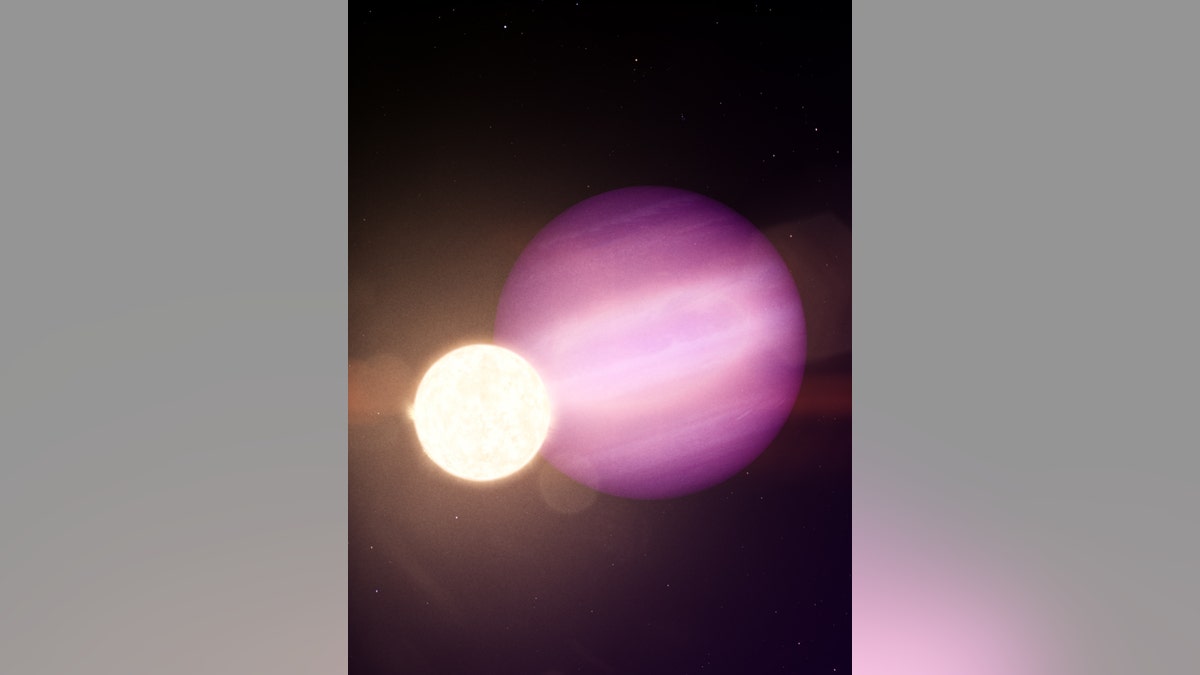Fox News Flash top headlines for September 17
Fox News Flash top headlines are here. Check out what's clicking on Foxnews.com.
NASA’s Transiting Exoplanet Survey Satellite (TESS) and the space agency’s retired Spitzer Space Telescope have been used to spot the first possible "survivor" planet hugging a white dwarf star.
White dwarfs are what stars become after they have exhausted their nuclear fuel.
“The Jupiter-size object, called WD 1856 b, is about seven times larger than the white dwarf, named WD 1856+534,” explains NASA in a statement. “It circles this stellar cinder every 34 hours, more than 60 times faster than Mercury orbits our Sun.”
NASA CHIEF SAYS VENUS IS 'ONE STOP IN OUR SEARCH FOR LIFE'
A paper on the discovery has been published in the journal Nature.

In this illustration, WD 1856 b, a potential Jupiter-size planet, orbits its much smaller host star, a dim white dwarf. (Credits: NASA’s Goddard Space Flight Center)
“WD 1856 b somehow got very close to its white dwarf and managed to stay in one piece,” said in a statement Andrew Vanderburg, who was a NASA Sagan Fellow at UT Austin while completing the research and is now an assistant professor at the University of Wisconsin-Madison. “The white dwarf creation process destroys nearby planets, and anything that later gets too close is usually torn apart by the star’s immense gravity. We still have many questions about how WD 1856 b arrived at its current location without meeting one of those fates.”
WD 1856+534 is described as being 40% larger than Earth.
'VAMPIRE' STAR SPOTTED BY NASA’S PLANET-HUNTING KEPLER SPACE TELESCOPE
“We’ve known for a long time that after white dwarfs are born, distant small objects such as asteroids and comets can scatter inward towards these stars. They’re usually pulled apart by a white dwarf's strong gravity and turn into a debris disk,” said co-author Siyi Xu, an assistant astronomer at the international Gemini Observatory in Hilo, Hawaii, in the statement. “That’s why I was so excited when Andrew told me about this system. We’ve seen hints that planets could scatter inward, too, but this appears to be the first time we’ve seen a planet that made the whole journey intact.”
Experts from UT Austin and Caltech also participated in the work.
NASA’s wealth of space hardware continues to shed new light on distant stars. In a separate project, scientists recently used data from NASA’s Kepler space telescope to discover a “vampire” star “sucking” the life out of another star.
CLICK HERE TO GET THE FOX NEWS APP
Experts discovered a surprising “super-outburst” from a dwarf nova, a type of “cataclysmic variable star.” According to NASA, the star system, which consists of a white dwarf star and its much smaller brown dwarf companion, was seen brightening by a factor of 1,600 over less than a day. It then slowly faded away.
Follow James Rogers on Twitter @jamesjrogers





















